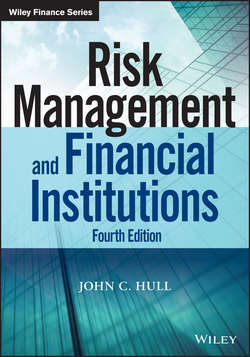Читать книгу Risk Management and Financial Institutions - Hull John C. - Страница 39
На сайте Литреса книга снята с продажи.
PART One
Financial Institutions and Their Trading
CHAPTER 3
Insurance Companies and Pension Plans
3.8 REINSURANCE
ОглавлениеReinsurance is an important way in which an insurance company can protect itself against large losses by entering into contracts with another insurance company. For a fee, the second insurance company agrees to be responsible for some of the risks that have been insured by the first company. Reinsurance allows insurance companies to write more policies than they would otherwise be able to. Some of the counterparties in reinsurance contracts are other insurance companies or rich private individuals; others are companies that specialize in reinsurance such as Swiss Re and Warren Buffett's company, Berkshire Hathaway.
Reinsurance contracts can take a number of forms. Suppose that an insurance company has an exposure of $100 million to hurricanes in Florida and wants to limit this to $50 million. One alternative is to enter into annual reinsurance contracts that cover on a pro rata basis 50 % of its exposure. (The reinsurer would then probably receive 50 % of the premiums.) If hurricane claims in a particular year total $70 million, the costs to the insurance company would be only 0.5 × $70 or $35 million, and the reinsurance company would pay the other $35 million.
Another more popular alternative, involving lower reinsurance premiums, is to buy a series of reinsurance contracts covering what are known as excess cost layers. The first layer might provide indemnification for losses between $50 million and $60 million, the next layer might cover losses between $60 million and $70 million, and so on. Each reinsurance contract is known as an excess-of-loss reinsurance contract.
